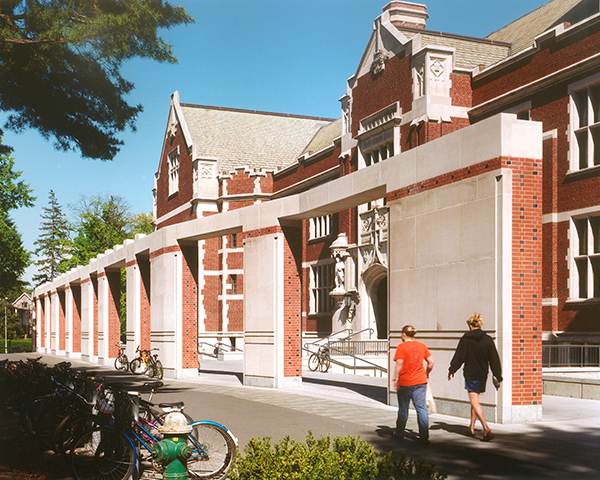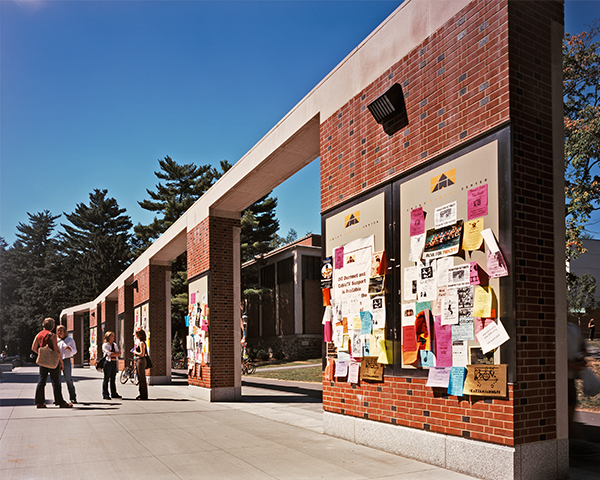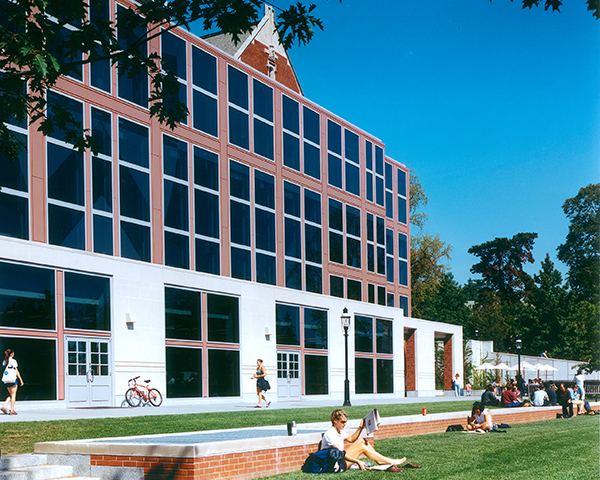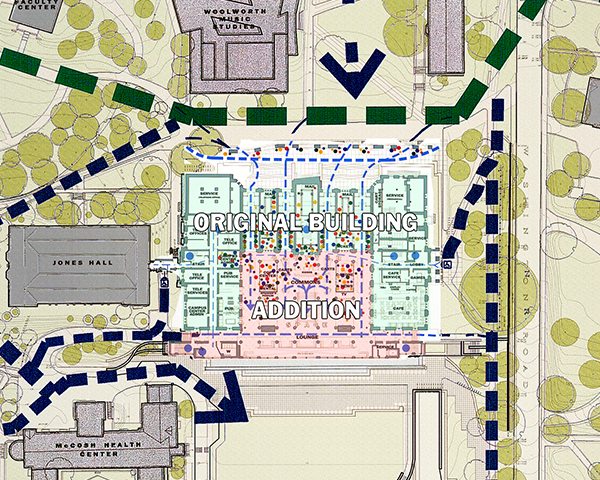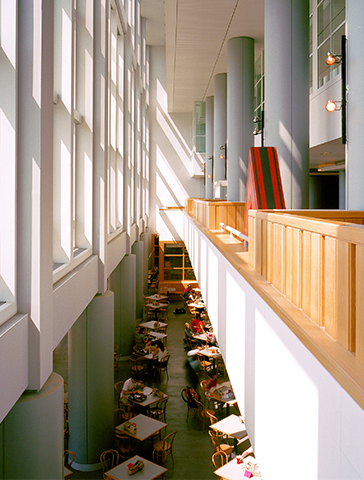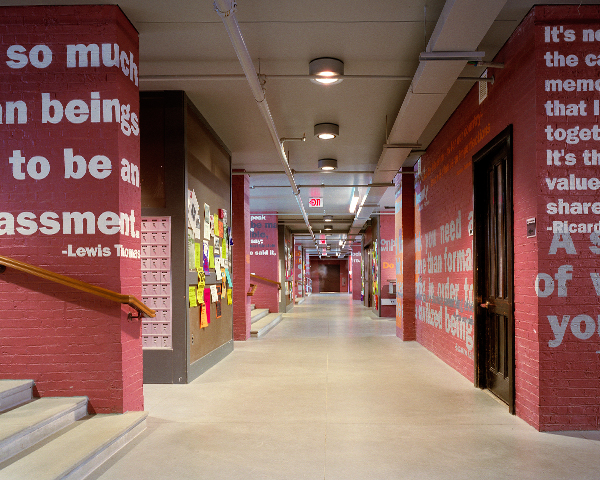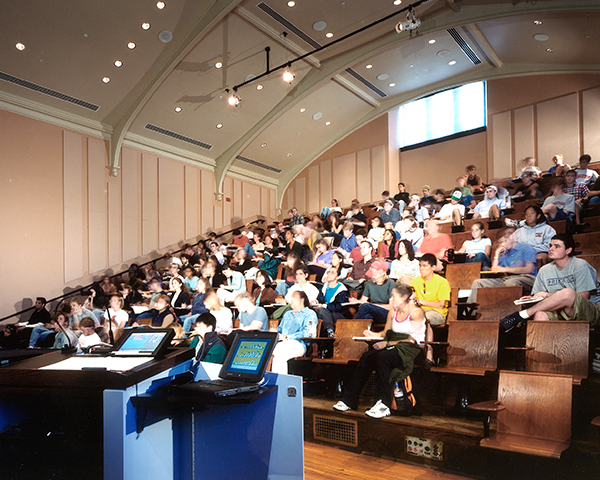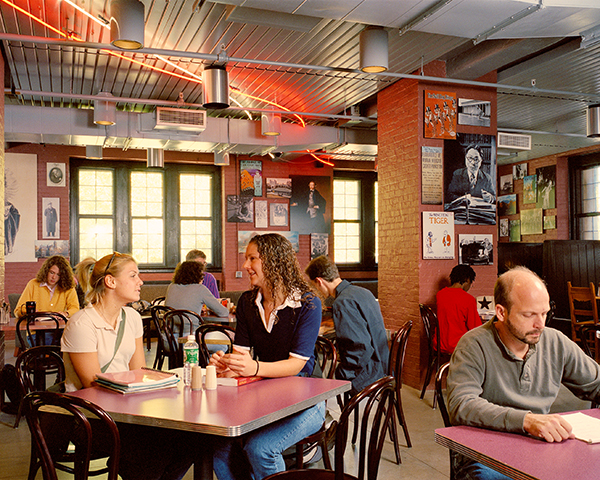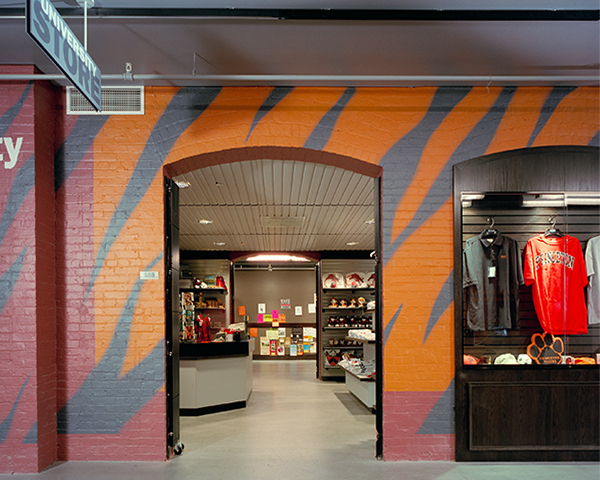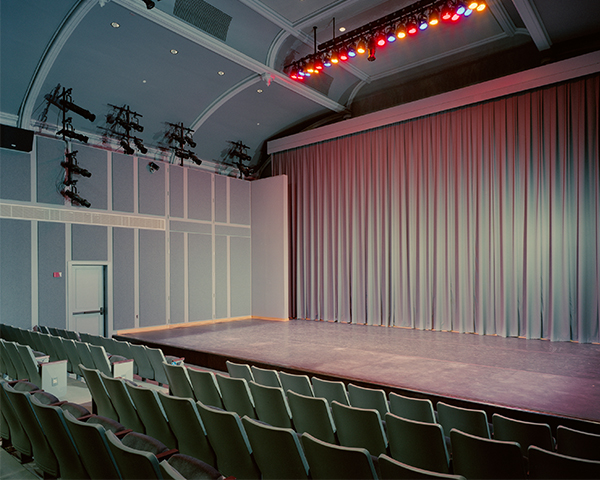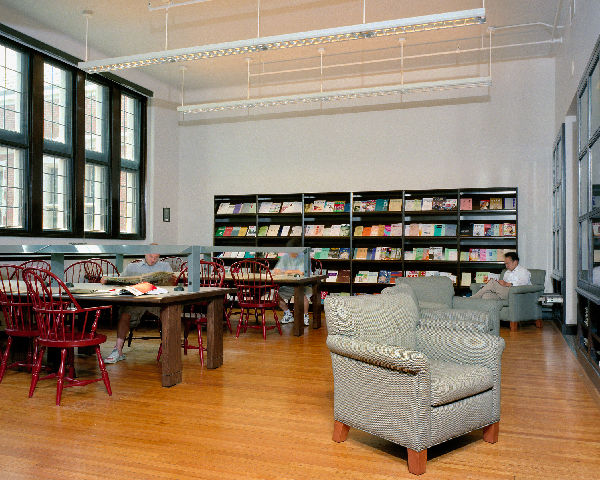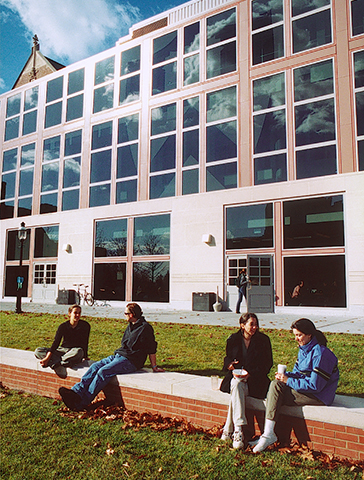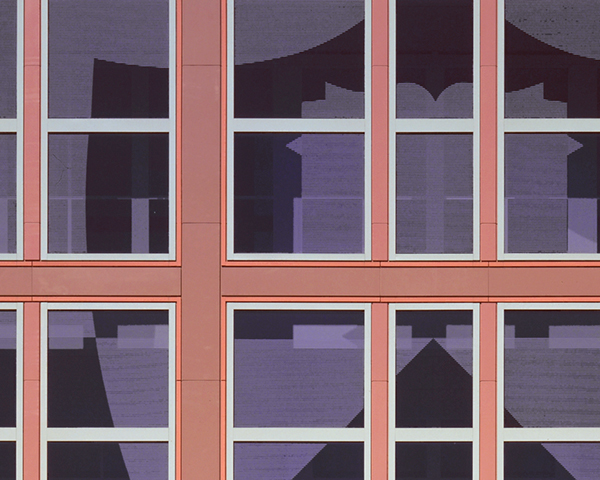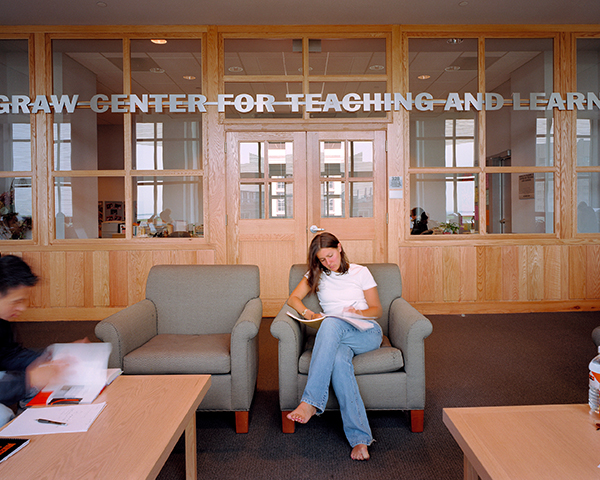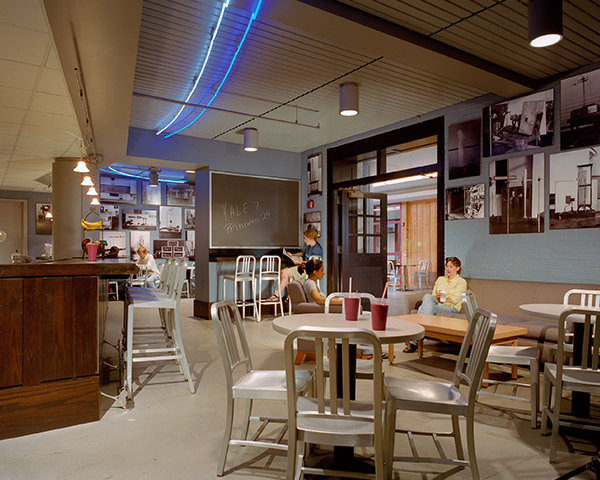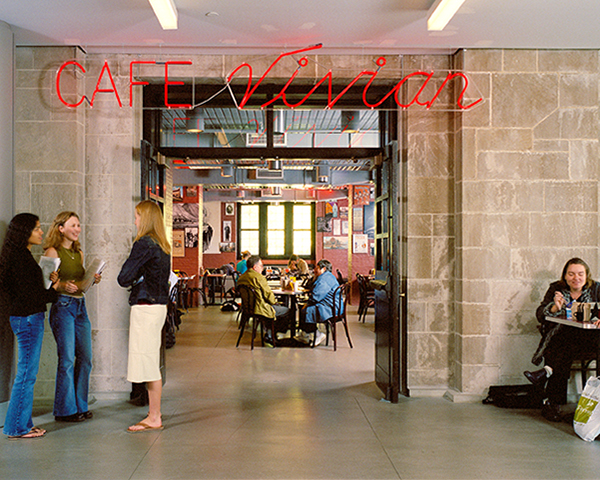VSBA renovated and expanded Palmer Hall, Princeton University’s original physics laboratory, to house the new Frist Campus Center. The University first proposed a campus center in the 1920s, but the project wasn’t undertaken until the 1990s. Palmer Hall, historically significant though deteriorated and underutilized at the periphery of the traditional campus core, over time became the geographical center of the changing campus. Paths linking academic, social, recreational, and residential activities intersected at the site.
The design for the campus center is organized to reinforce these paths and establish the facility as a locus of activity along these routes — at once a destination and point of passage and casual interaction. The primary procession through the facility follows the terraced grading of the site. Visitors approaching from the north flow through a new arcade, designed as an extension of the existing building, into entries at Palmer’s lower level and move south through a series of “streets” lined with shops, student mail and information boards. At the end of these paths is a light-filled lounge overlooking an atrium with views opening out to the south. A generous flight of stairs leads further down to a dining room which opens south onto a terrace and lawn. Multiple entries are provided at this level for those approaching from the south.
The adaptation of an existing building is appropriate for a campus center, providing discovered places and lived-in spaces for a mix of uses. As a form of generic loft building — with repetitive, generous spaces readily adapted for multiple uses — Palmer provides for many aspects of the campus center program. These spaces are juxtaposed with open and flowing spaces appropriate to the new construction and constituting the south face of the building as a whole.
Frist’s state-of-the art academic spaces include new classrooms outfitted with extensive audiovisual systems; one was restored with the original seating and a display of the room’s original scientific apparatuses, while another retained its original vaulted and ribbed plaster ceiling but was completely transformed to house a film and performance theater. Frist also offers a home to Princeton’s East Asian Library and Gest Collection.
The new arcade and multiple entries at the north face make more public the rather private and closed façade of Palmer, while respecting the beautiful quality of the Jacobean style of its architecture. But there is no ambiguity between new and existing in the complex. The south, window-walled façade cloaking the wing of new construction represents the singular nature of the Frist Campus Center — a communal entity and a place of community. At night the lighted interior is opened-up, displaying multiple architectural layers and a rich mix of activity.
